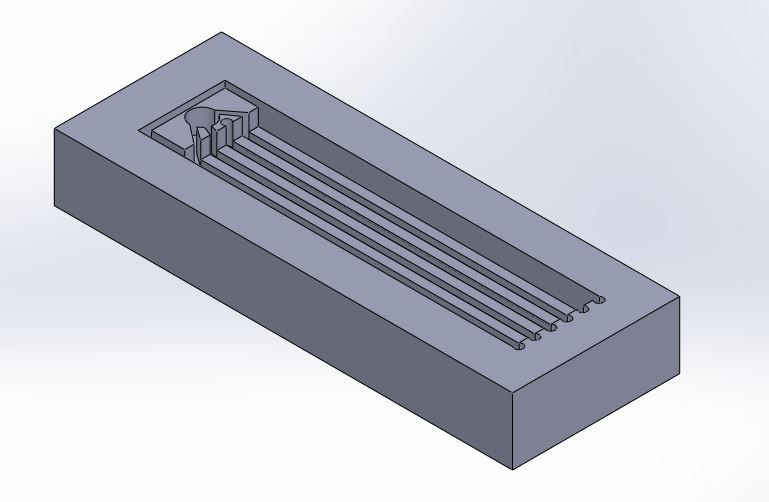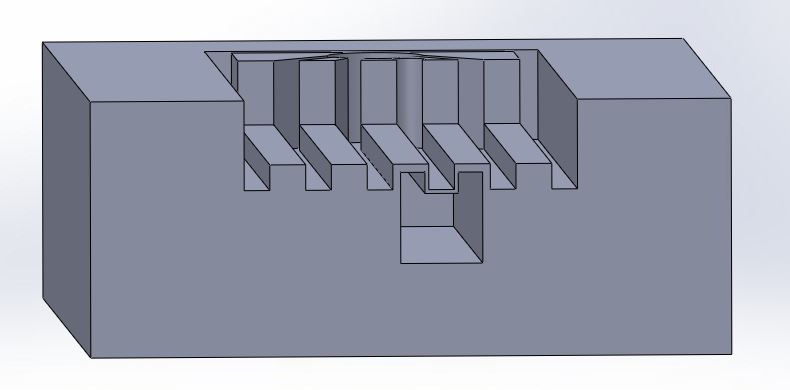
Figure 1

Figure 2

Team 5
Team Members |
Faculty Advisor |
Dean Segal |
Dr. Yupeng Chen Sponsor UConn Biomedical Engineering Department |
sponsored by

Design of Microfluidic Systems via 3D Printing
The objective of this project is to design and fabricate a microfluidic device that successfully models the development of osteoarthritis in the knee. Microfluidic systems have recently been utilized to mimic the function of human organs. These tissue chips allow for different cell types in the tissue to communicate as they would in the body through the microchannels. Our tissue chip design consists of six channels. Four of the channels hold cells and the other two channels are used for fluid circulation. The channels from left to right on the chip design are: media circulation, bone cells, articular cartilage (AC) cells, synovial fluid circulation, synovial membrane cells, and the other media circulation connected with the first. These are specifically aligned to mimic the anatomy of the knee joint and cell signaling with osteoarthritis. The circulation channels are being circulated using automated pumps outside the system that push the nutrients around the chip for all the cell channels. A pneumatic actuator design consists of a vacuum chamber surrounding the AC cell channel to create stretch and pressure forces that stimulate the stresses on the tissue as osteoarthritis develops. Each cell channel is about 1.5 millimeters in width and the entire chip fits onto 75 millimeters by 25 millimeters glass slide.
